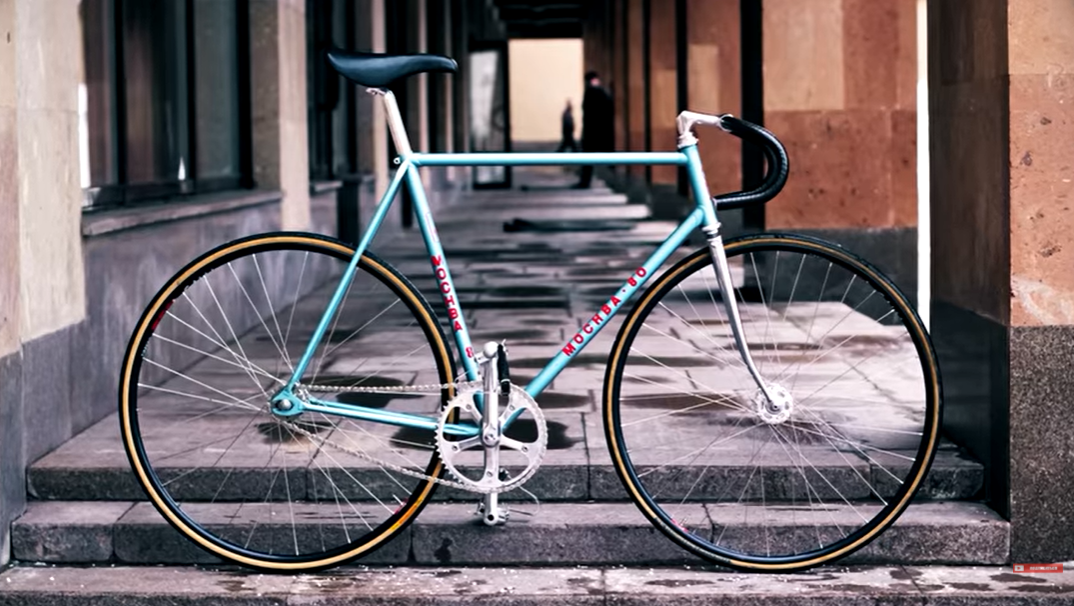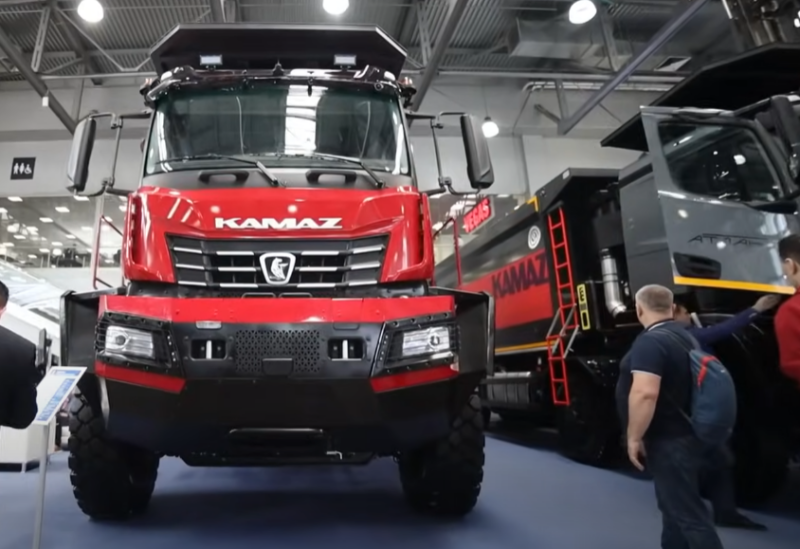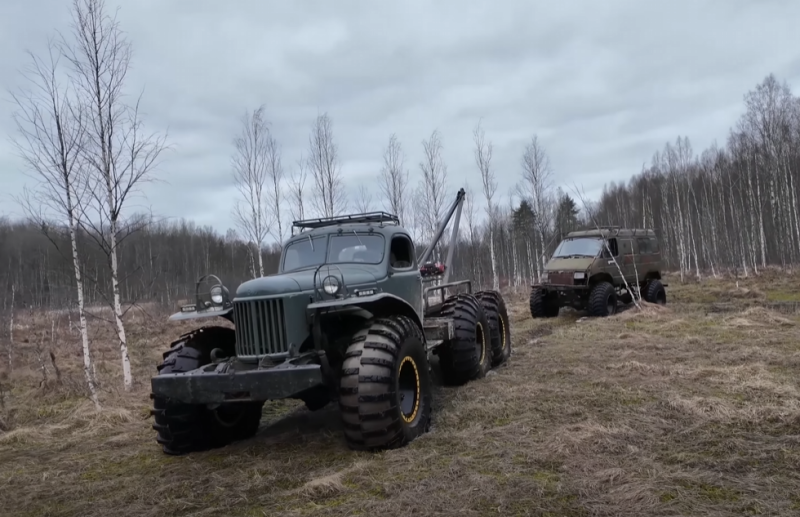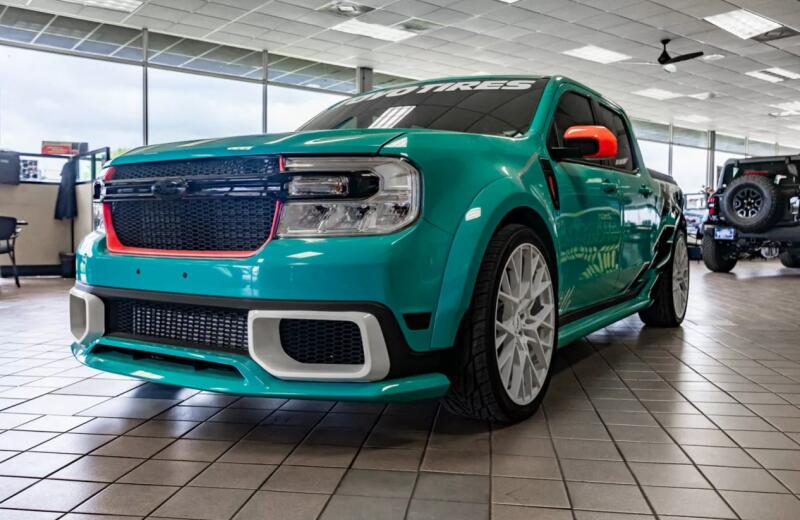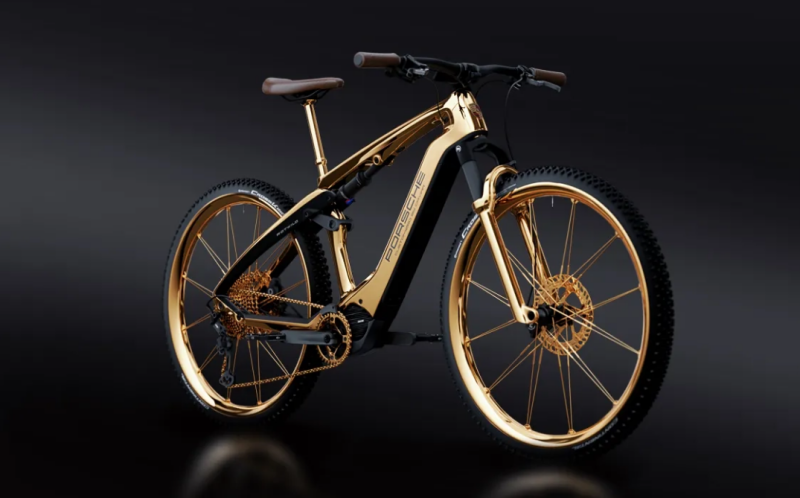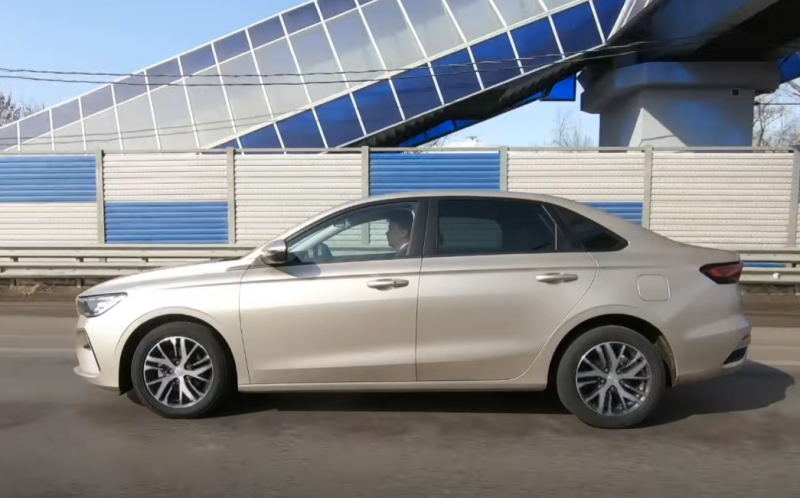Short story
The bicycle was familiar to the inhabitants of tsarist Russia. However, only after the October Revolution, transport gained mass distribution. Before that, it was expensive, so only wealthy people could afford an “iron horse”.
A round of development of bicycle production fell on the 20s of the twentieth century. The Kharkov plant was the first to start producing transport on two wheels. If in 1923 a prototype rolled off the assembly line, then a year later 1000 bicycles went on sale. Then they were sold nameless, and only in 1926 the name of the model that became a legend was heard - this is "Ukraine".

As a rule, the owner of the "Ukraine", which has survived to this day, has to complain only about the wear of the seat and the corrosion of the metal. Photo: youtube
For six years, the Kharkov Bicycle Plant was a monopolist. In 1929, a similar production was opened in Moscow. Only after World War II did new enterprises appear in Minsk, Penza and other cities.
The assortment gradually expanded, engineers developed new models, many of them deserve to replenish the collections of connoisseurs today.
Features of the Soviet bicycle
Despite the expansion of the model range, the bicycles of the Soviet era are broadly similar to each other. They are united by:
? simplicity of lines
? quality factor of materials
? high build quality
? corrosion protection
Factories in the USSR produced models with an open, closed or convex frame for adult riders.
Traditionally, bicycles were equipped with wings, a drum brake, which worked when the pedals were rotated in the opposite direction. The exception is single racing versions, where the V-brake design was encountered.
Simplicity was expressed in a minimum of accessories. Sometimes transport was supplemented with a footboard, baskets were even less common. Even reflectors were not considered a mandatory element. Let's remember the most worthy and favorite models!
For children
Surely for many it will be a discovery that there were more than 50 children's models in the Soviet space! Among them were versions on two and three wheels. The latter were distinguished by super stability, ensuring the complete safety of the child. Two-wheelers often came with extra wheels to learn how to ride.
✅ "Baby" - an elementary and reliable design, which began the acquaintance of children with a bicycle aged from 1 to XNUMX years
✅ "Sparite" or "Dragonfly" - a model from the Latvian USSR, which was export-oriented, so Soviet kids rarely saw her
✅ "Veterok" - a transforming bike that rode on both two and three wheels, was intended for children from 3 years old

Contemporaries "Kid" will seem unsightly, but it was he who was trusted by his parents, since he was very stable. Photo: youtube
Only in children's models there were parts made of plastic, which was rare for Soviet times.
For schoolchildren and teenagers
For this age group, there were more than a hundred models. The key difference is that bikes for children and teenagers were adjusted to height by adjusting the height of the seat and handlebars.
✅ “Mishka”, originally from Saransk, was focused on children aged 5-7 years, it was distinguished by a deep frame deflection, pneumatic tires on wheels with a diameter of 12 inches. For comfort, the seat was upholstered with leatherette and foam rubber.
✅ "Bunny-Lux" - a model of Lviv production for children 4-7 years old. She had a seat with a back, the wheels covered the wings. The bicycle was distinguished by an expanded configuration: a decorative headlight and a horn-shaped horn were attached to it. It was also possible to install support rollers while the child is learning to ride, and a metal trunk was also offered in addition
✅ "Druzhok" - a bicycle with a folding steel frame on 14-inch wheels with rubber tires. In addition, small wheels were included to facilitate the learning process.
✅ "Ryabinka" - a model with an open type frame, with a drum brake and a soft saddle - a semi-rigid frame was upholstered with foam rubber and leatherette on top. Plus, the bike relied on reflectors, a shield for the chain. It even came with a pump and hose.
✅ "Butterfly" - a development from the Tula region, created for children aged 4 to 7 years. The welded bike was put on 12-inch wheels with pneumatic tires. The model was distinguished by the presence of two drum-type brakes - front and rear. In addition to the support rollers, a bell, a trunk were attached to the transport, and the chain was protected by a short shield

The girlish name "Ryabinka" hinted at who this model was intended for. Photo: youtube
Perhaps the most popular teenage bike is the Schoolboy, produced separately for boys and girls. On transport weighing 9.5 kilograms, the children willingly drove around the neighborhood, although his seat was harsh - made of durable plastic.
For sporty driving
In the USSR, cycling was supported by creating special models for this. Perhaps they are inferior to modern ones in terms of color and equipment, but this did not prevent them from enjoying racing and winning competitions. Such transport was distinguished by lightness and certain design features.
✅ "Champion" - created by Kharkiv residents specifically for competitions. Improvements to the frame have increased rigidity, while a fork with a larger stalk radius provides superior resiliency. Athletes rode the bike with pleasure - the engineers thought out the shape of the seat, which was hidden under the soft upholstery. Weighed "Champion" 10.5 kg
✅ "Moscow 80" - development for road racing. It also appeared thanks to the work of Kharkiv masters who prepared transport for athletes on the eve of the Olympics. The weight of the structure was reduced to 8.5 kg thanks to the combination of titanium and aluminum
✅ "Record" - a sports track bike, recognizable by a specific frame made of steel pipes. It was lightened by making rims of aluminum and duralumin - the weight reached 8.5 kg
✅ "Sprint" - was distinguished by the possibility of individual adjustment for the athlete. The frame of improved geometry is welded from thin-walled pipes. This model weighed a little more - 8.6 kg

"Moscow 80" stood out from its peers, deserving the best reviews: it was compared with the best "Europeans". Photo: youtube
The prize bike "Golden Wheels" was held in high esteem, although there was nothing remarkable in its design. It was created specifically for the presentation to the winners of the races of the Kharkov cycling club. The transport was distinguished by color - the frame was yellow, and the tires were golden.
road models
Members of this group were the most sought after. It was road bikes that were bought most willingly for city rides and trips out of town. In the USSR, such transport was presented in a large assortment, so it was quite possible to find the most successful model for your needs.
✅ "Tourist" - refers to the road-tourist type, designed for men. It was possible to buy a bicycle with a conventional drum brake, however, for long trips, modifications with a manual caliper brake system were preferred. He was hunted because he had 4 speeds, which was considered a rarity for his era.
✅ "Kharkov", renamed from the 50s to "Progress" - with a solid closed frame, an elementary steering wheel design and a very hard seat. The kit included a trunk and a bag with tools
✅ "Riga" - the bike was produced in female and male versions, and in several versions. Transport for ladies is recognizable by its open frame. The design provided for the possibility of adjusting the steering wheel in height thanks to a twist lock. The equipment of "Riga" was relatively rich: all the necessary accessories were offered in the kit - from a mirror to a pump and a generator
✅ "Tair", also known as "Altair", was produced in Yoshkar-Ola, was intended for teenagers and adults who could ride this bike for a walk and even a tourist trip. The model was distinguished by a direct landing, and a chair with a soft cape contributed to comfort

It is believed that the moped Riga-2 "Gauja" was born precisely on the basis of the bicycle of the same name. Photo: youtube
It is also worth remembering the Sura bicycles produced in Penza. By the way, they were produced until 2014, so they were recently on sale. Now "Sura" has passed into the category of a rarity.
Foldable models
Such bicycles were considered foppish! Although they were inferior in basic characteristics to versions with standard frames, it was chic to drive such vehicles.
The brightest and most characteristic representative of the group is Eureka. The model developed in Lvov looked unusual. She was distinguished by expressive features:
? The fork was decorated with a pseudoshock absorber
? The high steering wheel looks like it was borrowed from a chopper
The frame was folded according to the hinge principle in the longitudinal plane. In riding, "Eureka" was comfortable thanks to the springy carcass and soft cape. The basic kit included a pump and reflectors, a mirror, a bell and a saddle bag. Additionally, it was possible to buy a generator, a headlight and other equipment.
Transport for circus performances
Produced in the Union and specialized models! They were intended for tricksters and for figure skating. There were several such models, but details about them are unknown.
Today, curly and circus bicycles are extremely rare, they belong in museums, because initially the release was limited.
Until now, the "iron horse" of the Soviet era is able to compete with modern models in terms of strength and reliability. But, perhaps, this is the transport that is still worth grooming and cherishing. At a minimum, it is worth thinking about restoration and restoration if such a rarity is suddenly found in the attic or in the shed.
